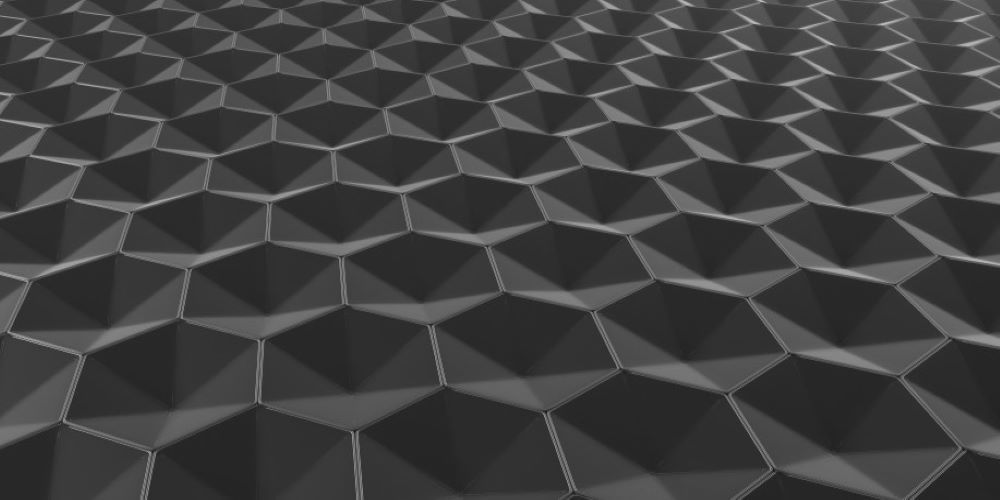Medieval Chainmail Inspires Next-Generation Body Armour
Interlocking 2D sheets provide formidable strength when included as feedstock for polymer materials.

With a glance back to the knights of old, nanotechnology researchers have created a ‘chainmail’ made from nanomaterials to form a super-strong, lightweight protective barrier. It is being hailed as the world’s first two-dimensional mechanically interlocked material and a discovery that is likely to play a key role in the personal protective armour and bomb and bullet-proof vests of tomorrow.
It could also be sought-after in other polymer composites for industries which require flexible, lightweight, yet durable and tough materials, such as the automotive industry, aerospace, sports equipment, and construction.
Significantly for industry, the process for making this novel nanomaterial chainmail is, according to the researchers from Northwestern University, both scalable and highly efficient.

“We made a completely new polymer structure,” explains the study's corresponding author Prof. William Dichtel. “It’s similar to chainmail in that it cannot easily rip because each of the mechanical bonds has a bit of freedom to slide around. If you pull it, it can dissipate the applied force in multiple directions. And if you want to rip it apart, you would have to break it in many, many different places.”
Its strength is directly related not only to the use of nanomaterials, which are some of the strongest materials known to science, but also in the ingenuity of how the two layers are connected.
Related: Nanotechnology Provides Custom-Made Raw Materials or Developing an Exoskeleton: How Far Has Science Come?
As the university press release observes, “Not only is it the first 2D mechanically interlocked polymer, but the novel material also contains 100 trillion mechanical bonds per 1 square centimeter—the highest density of mechanical bonds ever achieved.”
Nanotechnology research into polymer science has made huge advances in recent years, as the inclusion of nanomaterials can add desirable properties to a coating, plastic, epoxy resin or similar industrial material.
However, the ability to interlock two separate sheets of 2D material had been elusive until the Northwestern team approached the problem from a different angle.
To overcome the challenge, Dichtel's team began with X-shaped monomers which they arranged into a precise, highly ordered crystalline structure. According to the press release the researchers then “reacted these crystals with another molecule to create bonds between the molecules within the crystal.”
The resulting crystals are made up of many layers of 2D interlaced polymer sheets with the ends of the X-shaped monomers are linked together within. Then, by adding additional monomers, the gaps are filled to create a stiff, yet remarkably flexible structure.

“It was a high-risk, high-reward idea,” notes Dichtel. “We had to question our assumptions about what types of reactions are possible in molecular crystals.”
By dissolving the polymer in solution, the nanomaterial specialists found that the layers of interlocked monomers could peel away from one other.
“After the polymer is formed, there's not a whole lot holding the structure together,” explains Dichtel. “So, when we put it in solvent, the crystal dissolves, but each 2D layer holds together. We can manipulate those individual sheets.”
While previous nanotechnology research had already been able to make polymers with similar interlocking bonds, it could only be done in very small quantities. However, this latest nanomaterial breakthrough shows real signs of scalability due to its simplicity and the fact that the team were able to easily to synthesize 500 grams of the nanomaterial chainmail in the lab.
Further experimentation of the new nanomaterial by a team of researchers at Duke University led to it being added it to Ultem (a polymer in the same family as Kevlar) where it showed exceptionally high impact strength and potential as a body armour feedstock.
Specifically, the editor of the journal Science where the study has been published, notes that, “The addition of 2.5% by weight of this material to poly(ether imide) fibers increased their tensile modulus by 45% and ultimate stress by 22%.”
The new nanomaterial also proved highly resistant to acids, caustic chemicals, and temperature extremes.

“We have a lot more analysis to do, but we can tell that it improves the strength of these composite materials,” observes Dichtel. “Almost every property we have measured has been exceptional in some way.”
The discovery of 2D interlocking sheeting and its successful inclusion into polymer composites marks a significant advance in material science, with great promise for a range of applications. Its remarkable combination of impact strength and flexibility could revolutionize personal body armour, providing enhanced protection without compromising comfort or mobility.
Yet besides protective gear, this innovative nanomaterial could also be utilized in various industrial fields, offering potential for more resilient and adaptable technologies. It could reshape industries, creating safer, more efficient solutions in fields ranging from defence to manufacturing and beyond.
As Dichtel concludes, “We are continuing to explore its properties and will probably be studying it for years.”
Photo credit: Freepik, Kamran Aydinov, Freepik, Freepik, & Wikimedia

